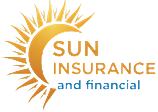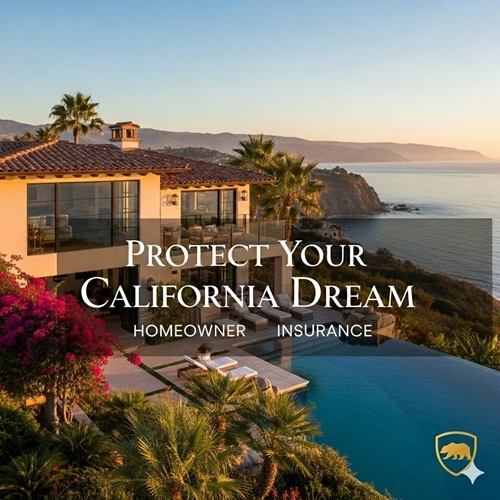
HO-3 Homeowner Insurance:
The Ultimate Guide to
Comprehensive Protection
Ho-3 homeowner Insurance: The dream of homeownership is often considered the cornerstone of the American experience. It represents stability, security, and a personal sanctuary. But what happens when that dream faces a threat—a sudden fire 🔥, a devastating storm ⛈️, or an unexpected liability claim? This is where HO-3 homeowner insurance steps in, acting as the primary guardian of your most valuable asset.
Often referred to as the “Special Form” policy, the HO-3 is the most common and widely utilized type of homeowners’ insurance in the United States. It strikes a crucial balance, offering broad, robust protection for your dwelling while maintaining a generally affordable premium. This comprehensive guide will meticulously explore every facet of the HO-3 homeowner insurance policy, detailing its unique structure, core coverages, essential exclusions, and how it stacks up against other options in the insurance landscape. Understanding this policy is not just about fulfilling a requirement; it’s about securing true peace of mind.
📋 Table of Contents

| Section | Description |
| 1. What is HO-3 Homeowner Insurance? | Defining the policy and its “hybrid” coverage approach. |
| 2. Who Needs an HO-3 Policy? | Identifying the typical homeowner profile and lender requirements. |
| 3. The Six Core Coverages (A-F) | Detailed breakdown of Dwelling, Personal Property, and Liability components. |
| 4. Understanding Perils: Open vs. Named | The critical difference between “All-Risk” (Open Peril) for the home and “Named Peril” for possessions. |
| 5. Standard Exclusions: What HO-3 Does NOT Cover | Essential perils that typically require separate insurance policies. |
| 6. HO-3 vs. The Competition | A comparison table with HO-1, HO-2, and HO-5 forms. |
| 7. Scenarios and Outcomes | Real-world examples of how HO-3 coverage would apply. |
| 8. Financial Considerations: Replacement Cost vs. ACV | Understanding how your claims will be paid out. |
| 9. Frequently Asked Questions (Q&A) | Addressing common homeowner queries about HO-3 insurance. |
| 10. Conclusion and Next Steps | Final thoughts on securing your home’s future. |
1. What is HO-3 Homeowner Insurance?

The HO-3 homeowner insurance policy, or the “Special Form” policy, is the bedrock of property protection for most owner-occupied single-family homes. Its popularity stems from its superior level of coverage compared to more basic forms like HO-1 and HO-2, making it the industry standard required by most mortgage lenders.
The Hybrid Structure: Open Peril Meets Named Peril
The defining characteristic of the HO-3 is its hybrid nature:
-
Dwelling and Other Structures (Open Peril): The physical structure of your home (Dwelling) and detached buildings (Other Structures) are covered on an Open Peril (or “All-Risk”) basis. This is a massive advantage. It means your home is covered for all causes of loss except for those specifically excluded in the policy language. The burden of proof to deny a claim falls on the insurance company.
-
Personal Property (Named Peril): Your personal belongings—furniture, electronics, clothing, etc.—are typically covered on a Named Peril basis. This is a more restrictive form of coverage. It means your possessions are only covered if the cause of damage or loss is explicitly listed (or “named”) in your policy document. The burden of proof to approve a claim falls on the homeowner.
This blend provides comprehensive protection for the structure itself, while keeping the overall policy premium manageable compared to the most comprehensive option (HO-5), which covers personal property on an Open Peril basis as well.
2. Who Needs an HO-3 Policy? 🔑
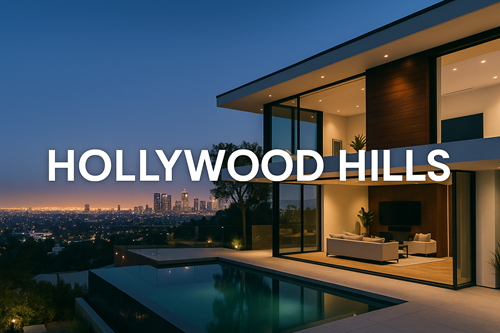
The short answer is: Almost every homeowner of a traditional, owner-occupied single-family dwelling needs HO-3 homeowner insurance.
The Lender’s Mandate
For the vast majority of homeowners, purchasing this policy is not optional. If you have a mortgage, your lender will require you to carry homeowners insurance as a condition of the loan. This requirement ensures that the significant investment they have in your property is protected. The HO-3 is typically the minimum standard of comprehensive coverage that lenders demand, due to its robust “Open Peril” protection for the dwelling.
The Homeowner’s Prudence
Even if you own your home outright (no mortgage), neglecting to purchase HO-3 homeowner insurance would be a monumental financial risk. Consider the potential cost of:
-
Rebuilding your home after a major fire 🔥 or tornado 🌪️.
-
Paying for a lawsuit after a guest is seriously injured on your property.
-
Replacing all your possessions after a total loss due to a covered event.
An HO-3 policy transfers these massive, unpredictable financial risks to the insurance company for a relatively small annual premium.
3. The Six Core Coverages (A-F) 🛡️

Every HO-3 policy is a “package” policy, meaning it bundles six distinct types of protection into a single premium. Understanding these coverages is key to knowing the true value of your HO-3 homeowner insurance.
| Coverage Section | What It Covers | How Coverage Limits are Set |
| Coverage A: Dwelling | The physical structure of your home, including attached garages and decks, plus fixtures (plumbing, wiring, heating). | Based on the estimated cost to rebuild the home (Replacement Cost), not its market value. |
| Coverage B: Other Structures | Detached structures on your property, such as fences, sheds, detached garages, and gazebos. | Typically set at 10% of the Coverage A (Dwelling) limit. |
| Coverage C: Personal Property | Your belongings, including furniture, electronics, clothing, appliances, and tools. | Usually set at 50% to 70% of the Coverage A limit. |
| Coverage D: Loss of Use (Additional Living Expenses – ALE) | Covers necessary, extra expenses if a covered loss makes your home uninhabitable. | Typically set at 20% to 30% of the Coverage A limit. |
| Coverage E: Personal Liability | Financial protection if you are legally responsible for a bodily injury or property damage to others. | A flat limit, commonly $100,000 to $500,000, chosen by the homeowner. |
| Coverage F: Medical Payments to Others | Covers small, no-fault medical expenses for guests injured on your property. | A small flat limit, commonly $1,000 to $5,000. |
Coverage Details:
-
A & B (Dwelling and Other Structures): This is the heart of the “Open Peril” protection. If a peril (cause of loss) occurs that is not on the list of exclusions, the damage is covered. For example, damage caused by a falling object like a satellite that unexpectedly crashes through your roof would likely be covered, even if that specific scenario isn’t listed.
-
C (Personal Property): Remember, this is Named Peril protection. Your belongings are covered against the 16 standard perils (often listed on an HO-2 form), which include fire, theft, vandalism, and windstorm. It is vital to note that expensive items like jewelry 💎, furs, art, and firearms often have sub-limits, meaning you may need an endorsement (rider) for their full value.
-
D (Loss of Use/ALE): This coverage is a financial lifeline. If a covered fire renders your home unlivable for six months, this part of your HO-3 homeowner insurance pays for your temporary housing (hotel or rental) and other extra living expenses (like restaurant meals over your typical grocery bill).
-
E & F (Liability and Medical Payments): This is crucial protection for your financial future. If your dog bites a neighbor, or a contractor falls from a ladder on your property, this coverage pays for the legal defense costs and settlement or judgment amounts (up to your limit). This protects your assets from being seized in a lawsuit.
4. Understanding Perils: Open vs. Named 💡
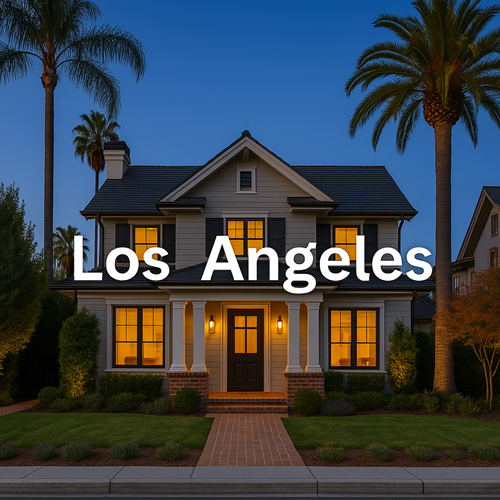
The difference between Open Peril and Named Peril is the most complex, yet most important, concept in understanding HO-3 homeowner insurance.
A. Open Peril (All-Risk) for the Structure (Coverage A & B)
-
Definition: An event is covered unless it is specifically listed as an exclusion in the policy.
-
Burden of Proof: The insurance company must prove the cause of loss is excluded.
-
Example: A rare, unlisted accident—perhaps a tree removal service accidentally backing their crane into your home. Since vehicle damage is generally not a standard exclusion for the dwelling, it would be covered. If it were a Named Peril policy, you would have to hope “damage caused by vehicles” was on the list.
B. Named Peril for Personal Property (Coverage C)
-
Definition: An event is only covered if it is one of the specific perils listed in the policy.
-
Burden of Proof: The homeowner must prove the cause of loss was a Named Peril.
-
The 16 Named Perils typically covered in an HO-3:
-
Fire or lightning 🔥
-
Windstorm or hail 🌪️
-
Explosion
-
Riot or civil commotion
-
Damage caused by aircraft
-
Damage caused by vehicles 🚗
-
Smoke
-
Vandalism or malicious mischief
-
Theft 🥷
-
Volcanic eruption
-
Falling objects
-
Weight of ice, snow, or sleet ❄️
-
Accidental discharge or overflow of water or steam (from plumbing)
-
Sudden and accidental tearing apart, cracking, burning, or bulging of a steam, hot water, A/C, or fire sprinkler system.
-
Freezing of a household system
-
Sudden and accidental damage from an artificially generated electrical current (like a power surge)
-
5. Standard Exclusions: What HO-3 Does NOT Cover 🛑

The “Open Peril” section for your dwelling is not truly “All-Risk.” There are standard, non-negotiable exclusions across virtually all HO-3 homeowner insurance policies. These are critical to know because they often require separate, specialized policies.
| Exclusion Category | Examples | Required Separate Coverage |
| Earth Movement | Earthquake 🌍, landslide, mudflow, sinkhole. | Earthquake Insurance endorsement or separate policy. |
| Water Damage | Flood 🌊, sewer backup, sump pump failure, water seeping up through the foundation. | Flood Insurance (available through the NFIP). Sewer Backup Endorsement. |
| Neglect and Wear & Tear | Damage from lack of maintenance, deterioration, rust, mold (not caused by a covered peril). | Homeowner responsibility. |
| Insects, Rodents, and Vermin | Termite damage 🐜, rodent chewing, bird infestation. | Homeowner responsibility. |
| War or Government Action | Military action, nuclear hazard. | Not insurable by standard civilian policies. |
| Intentional Loss | Damage or loss intentionally caused by an insured person. | Not covered. |
Important Note: Even though the peril of windstorm and hail is covered, if you live in a coastal area, your HO-3 policy may have a significantly higher deductible for hurricane or wind damage claims. Always check your policy’s declarations page for a separate hurricane deductible.
6. HO-3 vs. The Competition 🥊

The homeowners insurance market is structured around standard forms, each denoted by an “HO” number. Comparing the HO-3 homeowner insurance form to its most relevant counterparts—HO-1 (Basic), HO-2 (Broad), and HO-5 (Comprehensive)—highlights its unique position as the market workhorse.
| Policy Form | Name | Dwelling Coverage (A & B) | Personal Property Coverage (C) | Who is it For? | Key Difference from HO-3 |
| HO-1 | Basic Form | Named Perils (Basic 10) | Named Perils (Basic 10) | Rarely offered; very limited budget. | Least coverage; does not meet lender standards. |
| HO-2 | Broad Form | Named Perils (Broad 16) | Named Perils (Broad 16) | Homeowners seeking more than HO-1 but less than HO-3. | Dwelling is Named Peril (HO-3’s Dwelling is Open Peril). |
| HO-3 | Special Form | Open Perils (All-Risk) | Named Perils (Broad 16) | Most common for owner-occupied single-family homes. | The balance of broad dwelling protection and restricted personal property coverage. |
| HO-5 | Comprehensive Form | Open Perils (All-Risk) | Open Perils (All-Risk) | Newer homes or high-value homes with extensive assets. | Personal Property is Open Peril (HO-3’s is Named Peril). |
The HO-5 Advantage: The HO-5 is considered superior because it extends the powerful “Open Peril” coverage to your personal belongings. This means if an odd, unlisted accident damages your furniture (like an oil spill from a drone 🚁), it is covered under an HO-5, whereas it likely wouldn’t be covered under the Named Peril protection of an HO-3 homeowner insurance policy. For the small difference in premium, many homeowners choose to upgrade the personal property portion of their HO-3 to Open Peril via an endorsement, effectively creating an HO-5.
7. Scenarios and Outcomes 🎬
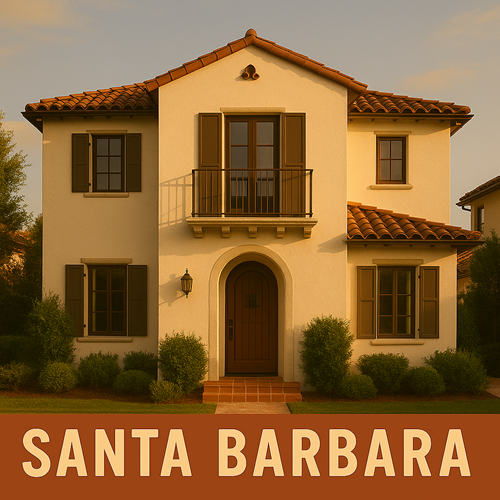
To truly grasp the power of HO-3 homeowner insurance, let’s examine multiple real-world scenarios and their resulting outcomes.
Scenario 1: The Unexpected Storm ⛈️
-
The Event: A powerful, sudden windstorm rips part of the shingle roof off the main house (Coverage A). Rain then pours through the gap, causing extensive damage to the attic and the antique china cabinet (Coverage C) in the bedroom below.
-
HO-3 Outcome:
-
Roof and Attic (Dwelling): Covered. Windstorm is a covered peril for the Open Peril dwelling.
-
China Cabinet (Personal Property): Covered. Windstorm is one of the 16 Named Perils for personal property. The water damage is a direct result of the covered wind damage.
-
Loss of Use (If Uninhabitable): Covered. If the damage is so severe the home requires a temporary move, ALE kicks in to cover the excess living costs.
-
Scenario 2: The Mysterious Damage ❓

-
The Event: A homeowner returns from a weekend trip to find a large, inexplicable hole in a living room wall. There is no sign of forced entry, vehicle impact, or fire. The cause is entirely unknown and not among the Named Perils.
-
HO-3 Outcome:
-
Living Room Wall (Dwelling): Covered. The dwelling is Open Peril. Since the cause is not a listed exclusion (like flood or earthquake), the damage to the wall is covered.
-
Electronics (Personal Property): Not Covered. Since the cause is unknown and cannot be proven to be one of the 16 Named Perils (like theft or vandalism), there is no coverage for any damaged or missing personal items. This showcases the weakness of the HO-3’s personal property coverage.
-
Scenario 3: The Backyard Incident 🤕
-
The Event: During a summer barbecue, a guest trips over an uneven paver stone in the backyard patio, falls, and breaks their leg, requiring significant medical attention and a long recovery. The guest sues the homeowner for negligence.
-
HO-3 Outcome:
-
Lawsuit Costs (Personal Liability): Covered. Coverage E (Personal Liability) pays for the homeowner’s legal defense, and if they lose, it pays the settlement or judgment amount up to the policy limit (e.g., $500,000). This is perhaps the most important financial protection in the policy.
-
Immediate Medical Bills (Medical Payments): Covered. Coverage F (Medical Payments) can pay a small, initial amount (e.g., $2,000) for the guest’s immediate medical care, regardless of fault, to potentially prevent a larger lawsuit.
-
8. Financial Considerations: Replacement Cost vs. ACV 💰

How your claim is paid out can be the difference between a full recovery and a massive out-of-pocket expense. This relates to how your insurer values the loss.
| Valuation Method | Definition | Example | HO-3 Standard Coverage |
| Replacement Cost Value (RCV) | The cost to replace the damaged item with a new one of similar kind and quality, without deduction for depreciation. | A 5-year-old roof costs $20,000 to replace. You receive $20,000 (minus the deductible). | Dwelling (Coverage A) and Other Structures (Coverage B) are typically RCV. |
| Actual Cash Value (ACV) | The replacement cost of the item minus depreciation (wear and tear). | A 5-year-old roof has 50% depreciation. It costs $20,000 to replace. You receive $10,000 (minus the deductible). | Personal Property (Coverage C) defaults to ACV in many standard HO-3 policies. |
HO-3 homeowner insurance often defaults Personal Property (Coverage C) to ACV. This means that 5-year-old sofa that costs $1,500 to replace may only be valued at $500 after depreciation. Homeowners are strongly encouraged to add a Replacement Cost Endorsement for their Personal Property. This small extra cost ensures you can buy a new item to replace the old one, greatly enhancing the value of your coverage.
9. Frequently Asked Questions (Q&A) ❓
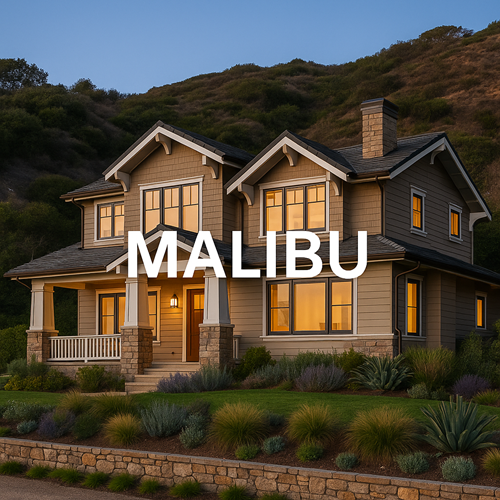
Q: Does HO-3 homeowner insurance cover mold?
A: It depends on the cause. If the mold is the result of a covered peril—for instance, a burst pipe (accidental discharge of water) that was sudden and accidental—there is usually limited coverage. However, if the mold is due to long-term neglect, poor maintenance, or a water leak that slowly developed over time, it will be excluded.
Q: If a tree falls on my neighbor’s fence, does my HO-3 cover it?
A: Only your liability portion might. If the tree was healthy and fell due to a storm (a covered peril), your HO-3 pays for the damage to your home (if it hit yours). If it hit your neighbor’s fence, their homeowner insurance would generally cover the damage to their fence. However, if the tree was dead, rotting, and you knew it was a danger, your neighbor could claim you were negligent. In that case, your Personal Liability (Coverage E) would step in to cover the claim.
Q: What if I run a small business from home?
A: Limited or No Coverage. Standard HO-3 homeowner insurance policies place strict limits on business property and liability. For instance, a policy might only cover $2,500 of business equipment. If you run a high-traffic business (like a home daycare) or have expensive business inventory, you will need a Home Business Endorsement or a separate Business Owners Policy (BOP) to ensure adequate liability and property protection.
Q: What is a deductible, and how does it relate to my claim?
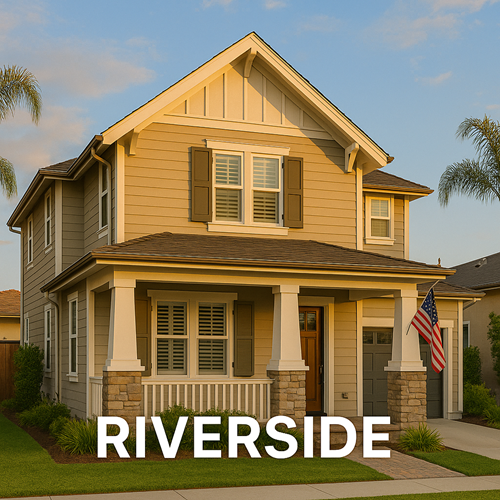
A: A deductible is the amount of money you must pay out-of-pocket before your insurance company begins to pay on a covered claim. If you have a $1,000 deductible and a covered fire causes $10,000 in damage, you pay the first $1,000, and the insurer pays the remaining $9,000. Higher deductibles result in lower annual HO-3 homeowner insurance premiums.
10. Conclusion and Next Steps 🚀
The HO-3 homeowner insurance policy is an indispensable shield for your primary residence and financial future. Its hybrid structure, offering “Open Peril” coverage for the dwelling and comprehensive liability protection, makes it the gold standard for homeowners across the nation.
While it is robust, remember that no policy covers everything. It is the responsibility of every prudent homeowner to:
-
Read the Exclusions: Know exactly what your policy does not cover (especially flood and earthquake) so you can purchase necessary separate policies or endorsements.
-
Verify Valuation: Ensure your Personal Property (Coverage C) is covered at Replacement Cost Value (RCV), not Actual Cash Value (ACV), to prevent a costly gap in coverage after a major loss.
-
Regularly Review Limits: Confirm your Dwelling limit (Coverage A) is adequate to rebuild your home today, and your Liability limit (Coverage E) is high enough to protect your total net worth.
Securing the right HO-3 homeowner insurance policy is about more than just satisfying a lender; it is about building a powerful barrier against life’s unpredictable disasters. Don’t leave the future of your sanctuary to chance.
Contact Sun Insurance and Financial Today
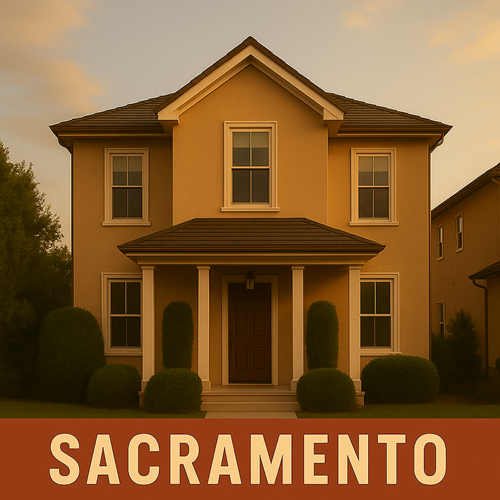
For personalized guidance, a comprehensive review of your existing policy, or to obtain a new quote tailored to your specific needs, the experts at Sun Insurance and Financial are ready to assist you.
Sun Insurance and Financial
Telephone: (310) 860-5000 📞
Homeowner Insurance: Homeowner Insurance
Sun Insurance and Financial https://SunInsurance.us
Travelers Insurance
The Hartford Insurance
California Fair Plan Insurance
Hiscox Insurance
